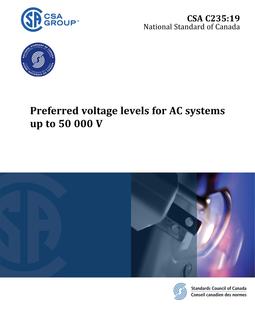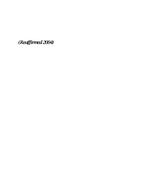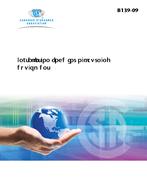Preface
This is the second edition of CSA N289.4, Testing procedures for seismic qualification of nuclear power plant structures, systems, and components. It supersedes the previous edition, published in 1986 under the title Testing Procedures for Seismic Qualification of CANDU Nuclear Power Plants. The title of this Standard has been changed to reflect an extension of its scope: it now addresses not only CANDU reactors, but also includes any nuclear power plant”s systems, structures, and components.
Scope
1.1 Structures, systems, and components requiring seismic qualification This Standard defines the processes and requirements for performing seismic qualification by testing and presents the test methods that may be used for the seismic qualification of the nuclear power plant structures, systems, and components (SSCs). Seismic qualification by testing is typically used for SSCs that will be performing both an active function and that are required to change state during or following a seismic event in order to perform a safety function, while maintaining structural and/or pressure-boundary integrity. Notes: (1) Clause 5.3 of CSA N289.1 specifies acceptable seismic qualification methodologies, including qualification by analysis, testing, or a combination thereof and qualification by similarity, depending on the nature and complexity of the SSC. (2) Some mechanical and electrical components are inherently seismically rugged and do not need to be tested to demonstrate seismic capability as discussed in Clause 5.8.5. 1.2 Specification development This Standard is intended to provide a basis for developing specifications for seismic qualification of SSCs by testing, or by a combination of analysis and testing, and to aid component purchasers, suppliers, and testing laboratories in selecting the appropriate test method(s) for performing a seismic qualification test. The specification provides the basis for the development of the test plan by the testing laboratory. 1.3 Acceptable methods This Standard presents several acceptable methods with the intent of permitting the user to make a judicious selection from among the various options. In making such a selection, the user of this Standard should choose those test methods which best recognize the characteristics of a particular SSC and the seismic environment under which it is required to perform its function. Note: It should be recognized that seismic qualification forms only a portion of the overall equipment qualification program. It is important that the qualification program for a component include consideration of all operational loadings (e.g., seismic, environmental, aging, thermal and mechanical stresses, deformation, etc.) for which the component must demonstrably meet its SSC functionality objectives. 1.4 Terminology In CSA standards, “shall” is used to express a requirement, i.e., a provision that the user is obliged to satisfy in order to comply with the standard; “should” is used to express a recommendation or that which is advised but not required; and “may” is used to express an option or that which is permissible within the limits of the standard. Notes accompanying clauses do not include requirements or alternative requirements; the purpose of a note accompanying a clause is to separate from the text explanatory or informative material. Notes to tables and figures are considered part of the table or figure and may be written as requirements. Annexes are designated normative (mandatory) or informative (nonmandatory) to define their application.
Product Details
- Published:
- 08/01/2012
- ISBN(s):
- 9781554917334
- Number of Pages:
- 68
- File Size:
- 1 file , 1.9 MB
- Product Code(s):
- 2421981, 2422122, 2421981


